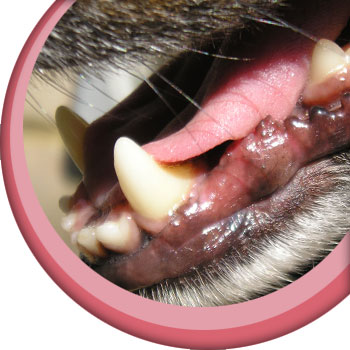Dental
Knowledge of the bacterial species present when dealing with an infectious condition will be very helpful in selecting an appropriate antimicrobial and therefore culture and sensitivity testing is often indicated. If this information is not available, a combination of cytology and a knowledge of which pathogens are likely for a given situation may help in selecting an appropriate antimicrobial. Some sites of infection have predictable common bacterial species, for example Staphylococci in canine pyoderma.3 Knowledge of the site of infection may also suggest whether bacteria are likely to be aerobic or anaerobic, for example abscesses are likely to involve obligate and facultative anaerobes.3
Suggested antimicrobials for dental infections*
Clindamycin3,7,84
Amoxicillin3,7
Metronidazole84 with spiramycin3,7
Doxycycline3,84
Amoxicillin-clavulanic acid for oral soft tissue infections84
There are very few oral or dental conditions that can be managed with antimicrobial treatment alone,84 and therefore these should generally be used alongside other dental treatment, such as tooth extraction.
Common bacterial pathogens
Anaerobes and mixed aerobes3
*Suggested antimicrobials are based on references from scientific literature and may not necessarily reflect UK market authorisations for the relevant species or condition. Veterinary surgeons are advised to carefully check the Summary of Product Characteristics (SPC) before prescribing a product.

Disclaimer: Indications and doses may vary between products. The antimicrobials listed may constitute an off licence use of the product and as such should only be used according to the ‘Cascade’, further details of which are available on the RCVS, VMD and NOAH websites. Veterinary surgeons are advised to carefully check the Summary of Product Characteristics (SPC) before prescribing a product and obtain informed owner consent where required.

